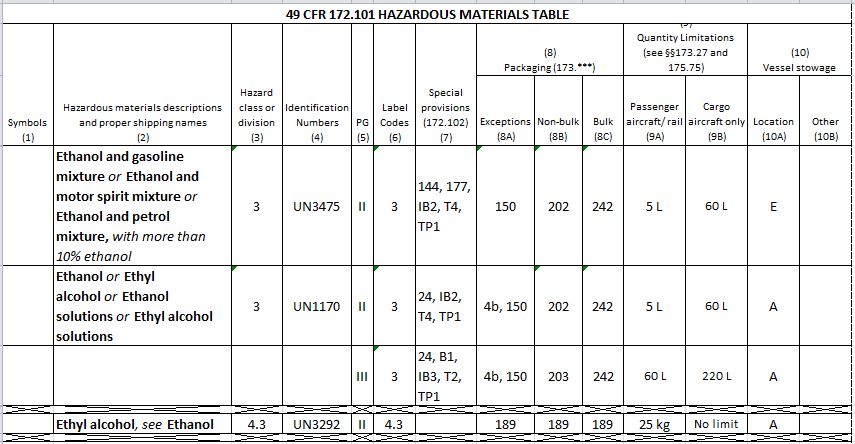Some interesting facts about the Ethanol industry from a brochure distributed by Growth Energy
Economic Impact:
- In 2013, the ethanol industry created and supported nearly 400,000 jobs. Moving to E15 would create an additional 136,000 jobs.
- A recent Louisiana State University study found ethanol reduces gas prices $.78/gallon – a consumer savings of more than $100 billion annually.
- In 2013, the ethanol industry contributed $44 Billion to the nation’s GDP and added $31 billion to household income.
- By creating a steady market for corn and other grains, ethanol helps to reduce federal farm program costs.
Environmental Impact:
- In 2013, the production and use of more than 13 billion gallons of ethanol in the U.S. reduced greenhouse gas emissions by 38 million metric tons, the equivalent of removing roughly 8 million automobiles from the road.
- Grain ethanol decreases greenhouse gas emissions by up to 57% compared to gasoline.
- Cellulosic ethanol is expected to reduce greenhouse gas emissions by 100% or more. Furthermore, the U.S. is home to more than one billion tons of available biomass that can be converted to 80-100 billion gallons of ethanol. This is a 50-state solution.
- New technologies are improving efficiencies and allowing ethanol biorefineries to make better use of natural resources like water.
- A recent USDA report shows ethanol is more energy efficient to produce than conventional gasoline. Every Btu put into creating ethanol is a 2.3 Btu return.
Energy Security:
- Every gallon of clean-burning ethanol that we produce in this country decreases the demand for foreign oil and keeps our money here at home where it can create American jobs.
- The production of more than 13 billion gallons of ethanol in 2013 displaced the need for 476 million barrels of oil.
- When the RFS was enacted in 2005, America imported 60% of its fuel. Today, we import 33%. Switching to domestic energy sources has helped reduce our dependence, strengthening our national security and our economy.
RFS The Renewable Fuel Standard (RFS) is a USA federal program that requires transportation fuel sold in the U.S. to contain a minimum volume of renewable fuels. The RFS originated with the Energy Policy Act of 2005 and was expanded and extended by the Energy Independence and Security Act of 2007 (EISA). Renewable Fuel Standard – Wikipedia, the free encyclopedia
en.wikipedia.org/wiki/Renewable_Fuel_Standard
Wikipedia
- We spend more than $300 billion a year – nearly $1,000 for every man, woman, and child in this country – on foreign oil.
Food and Fuel:
- A 2013 World Bank study outlines how crude oil prices are responsible for 50% of the increase in food prices since 2004.
- The real costs of putting food on the shelf are transportation, processing, and packaging – all costs driven by oil.
- The U.S. ethanol industry uses less than 3% of the global grain supply on a net basis.
- One-third of every bushel of corn used in ethanol production is returned to the food chain in the form of competitively-priced, nutritious animal feed – referred to as distiller’s grains.
- Since only the starch is used and distiller’s grains displace both corn and soybean meal, in reality only 17.5% of the net corn acres are used for renewable fuels. Academic, government, and third party research papers single out rampant Wall Street speculators, high oil prices, and the high costs of manufacturing, packaging and transporting groceries as the major drivers of increasing commodity prices and grocery store bills.
What does this have to do with the transportation of hazardous materials? Lots.  The ethanol industry is widely distributed throughout the U.S. – with the largest concentration in the Midwest – and promises to become more so as cellulosic ethanol production creates more potential feed-stocks for the the production of fuel-grade ethanol. All that production in the Midwest with the demand predominantly on the coasts means that a lot of hazardous materials: Ethanol and Ethanol and fuel mixtures; must be transported from their supply to the demand.
The ethanol industry is widely distributed throughout the U.S. – with the largest concentration in the Midwest – and promises to become more so as cellulosic ethanol production creates more potential feed-stocks for the the production of fuel-grade ethanol. All that production in the Midwest with the demand predominantly on the coasts means that a lot of hazardous materials: Ethanol and Ethanol and fuel mixtures; must be transported from their supply to the demand.  Whether it’s by highway in a cargo tank motor vehicle, by rail in a tank car, or by vessel in a portable tank, the transportation in commerce of a hazardous material like ethanol requires compliance with the regulations of the Pipeline and Hazardous Materials Safety Administration (PHMSA). I’ve already had an opportunity to provide HazMat Employee training for the personnel of a few ethanol plants, and biodiesel plants as well. Contact me to provide HazMat Employee training for your employees involved in the transportation of hazardous materials.
Whether it’s by highway in a cargo tank motor vehicle, by rail in a tank car, or by vessel in a portable tank, the transportation in commerce of a hazardous material like ethanol requires compliance with the regulations of the Pipeline and Hazardous Materials Safety Administration (PHMSA). I’ve already had an opportunity to provide HazMat Employee training for the personnel of a few ethanol plants, and biodiesel plants as well. Contact me to provide HazMat Employee training for your employees involved in the transportation of hazardous materials.
Contact me with any questions you may have about the transportation of hazardous materials by air, highway, vessel, or rail International and Domestic Daniels Training Services 815.821.1550 |
| Growth EnergyAmerica’s Ethanol Supporters777 North Capitol StreetSuite 805 Washington, D.C. 20002 202.545.4000 GrowthEnergy.org EthanolRetailer.com AmericanEthanolRacing.com |
